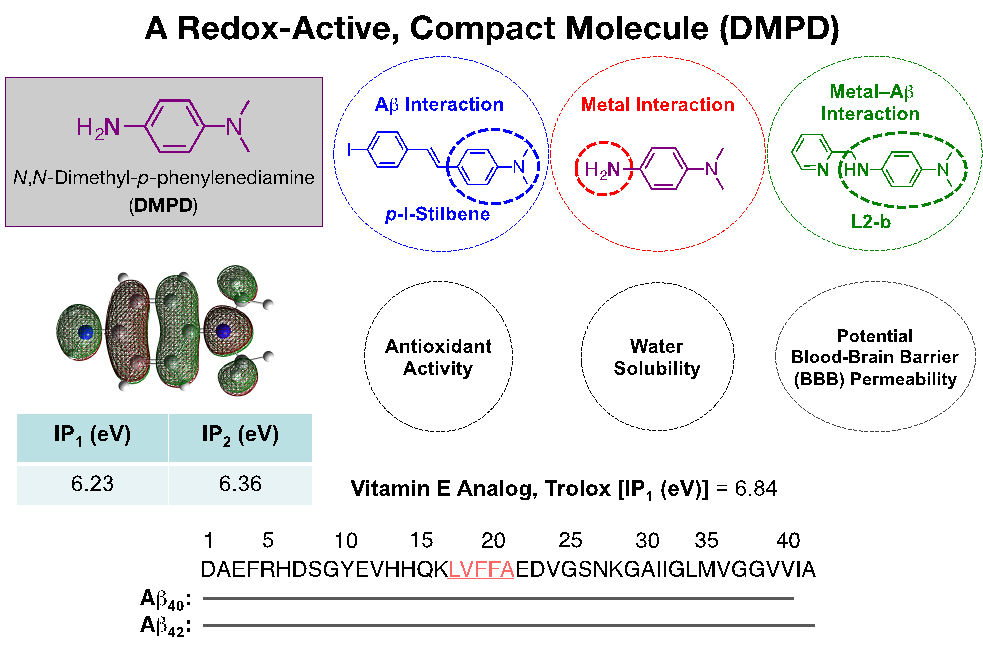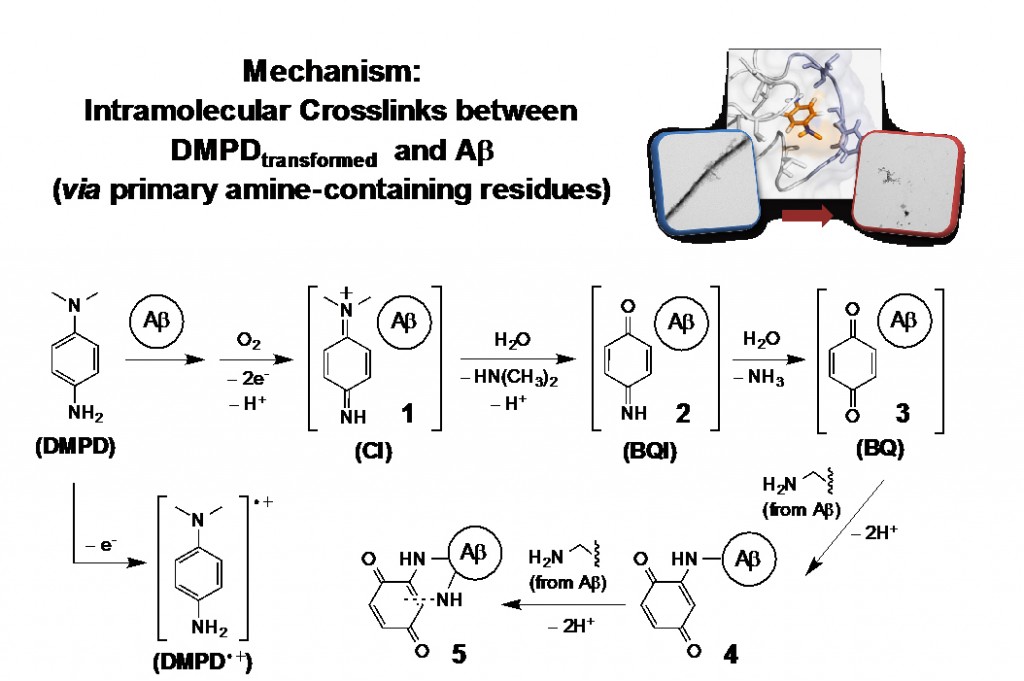Alzheimer’s disease (AD) is one of the most well-known and common form of dementia. It is also a progressive, degenerative brain disease whose cause is not fully understood, however, amyloid-β (Aβ) peptides, metal ions and reactive oxygen species (ROS) have been suggested to be involved in AD pathogenesis.
Despite the numerous treatments that have been developed to alleviate the disease symptoms and improve cognitive functions in AD, an effective and fundamental cure for AD still remain elusive.
In search for new drugs for AD, a recent study, affiliated with UNIST has suggested that the development of a compact chemical tool which can control the action of multiple pathological features of the disease could help illuminate the molecular level details required to direct further therapeutic approaches.

Chemical structure of DMPD and its effects toward metal-free/metal-induced Aβ40 aggregation in vitro.
This study was conducted by an international group of researchers, including Prof. Mi Hee Lim (School of Natural Science) of UNIST and her student, Jeffrey S. Derrick (School of Natural Science). Through this study, the team reported the identification of a novel strategy for redirecting both metal-free and metal-bound amyloidogenic peptides into nontoxic, off-pathway aggregates through the use of a redox-active compact molecule, N,N-dimethyl-p-phenylenediamine (DMPD).
Acccording to Jeffrey, the main researcher of the study, “Our biochemical and biophysical studies of DMPD toward metal-free and metal-associated Aβ, along with its in vivo investigations, present the feasibility of developing new, innovative approaches that employ redox-active compounds without the structural complexity as next-generation chemical tools for amyloid management.”

The chemical transformation of DMPD with Aβ has been analyzed under various conditions to elucidate how DMPD redirects Aβ peptides into less toxic, off-pathway unstructured Aβ aggregates.
In fact, the research team observed the ability of DMPD to significantly reduce cerebral amyloid content with a significant reduction observed for the sodium dodecyl sulfate (SDD)-soluble Aβ species which are indicative of toxic soluble pools of Aβ in an transgenic AD mouse model.
According to Prof. Lim, leader of this study published in the November 18th issue of the Journal American Chemical Society, “This is the first time that someone has presented DMPD as a promising multi-targeting drug candidate for the treatment of Alzheimer’s Disease.” She continues, “This new technology suggests an early and cost-effective method for diagnosing Alzheimer’s disease.”
Journal Reference:
Derrick, J. S. et al., A Redox-Active, Compact Molecule for Cross-Linking Amyloidogenic Peptides into Nontoxic, Off-Pathway Aggregates: In Vitro and In Vivo Efficacy and Molecular Mechanisms. J. Am. Chem. Soc. 2015.

















